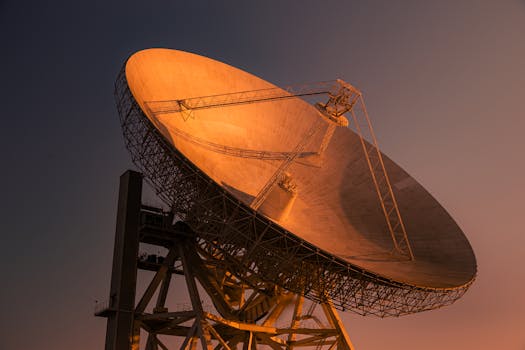Satellite Telecommunications 2023: Key Developments and What They Mean for the Industry

Satellite Telecommunications 2023: Key Developments and What They Mean for the Industry
The satellite telecommunications industry has experienced remarkable growth and innovation in 2023, driven by advancements in technology, increasing demand for global connectivity, and the need for resilient and secure communication networks. Satellite telecommunications play a vital role in bridging the digital divide, enabling communication in remote and underserved areas, and supporting critical infrastructure such as navigation, weather forecasting, and emergency response systems.
At the beginning of 2023, the satellite telecommunications industry was poised for significant developments, with several key trends and technologies expected to shape the future of the industry. One of the major developments in 2023 was the launch of new satellite constellations, such as OneWeb and Amazon’s Kuiper Systems, which promise to provide high-speed, low-latency internet connectivity to underserved communities around the world. These constellations are designed to offer faster and more reliable internet services, enabling greater connectivity and access to digital services for millions of people.
Another significant development in the satellite telecommunications industry in 2023 was the increasing adoption of 5G technology. Satellite operators are leveraging 5G to enhance their networks, providing faster data speeds, lower latency, and greater connectivity. The integration of 5G with satellite technology is expected to enable a wide range of new use cases, such as smart cities, IoT, and mission-critical communications. Furthermore, the development of 5G-enabled satellites is expected to support the growing demand for high-speed data services, including video streaming, online gaming, and virtual reality applications.
In addition to these developments, the satellite telecommunications industry in 2023 also saw significant advancements in satellite technology, including the development of more efficient and powerful satellites, such as high-throughput satellites (HTS) and very high-throughput satellites (VHTS). These satellites are designed to provide greater capacity and faster data speeds, enabling satellite operators to offer more competitive services and support the growing demand for data-driven applications.
Moreover, the satellite telecommunications industry in 2023 experienced a significant shift towards the adoption of cloud-based services and virtualization. Satellite operators are increasingly using cloud-based infrastructure to support their networks, enabling greater flexibility, scalability, and cost savings. The adoption of cloud-based services is also expected to enable satellite operators to offer more agile and responsive services, supporting the growing demand for digital transformation and IT modernization.
The satellite telecommunications industry in 2023 also saw significant developments in the area of cybersecurity. As satellite systems become increasingly interconnected and reliant on digital technologies, the risk of cyber threats and attacks has grown. In response, satellite operators and industry stakeholders have been working to develop and implement more robust cybersecurity measures, including advanced threat detection, encryption, and secure communication protocols. The development of more secure satellite systems is critical to protecting the integrity of satellite communications and preventing cyber threats.
In conclusion, the satellite telecommunications industry has experienced significant developments in 2023, driven by advancements in technology, increasing demand for global connectivity, and the need for resilient and secure communication networks. The launch of new satellite constellations, the adoption of 5G technology, advancements in satellite technology, the adoption of cloud-based services, and the development of more robust cybersecurity measures are all expected to shape the future of the industry and support the growing demand for digital services and connectivity.
The implications of these developments for the satellite telecommunications industry are significant. The industry is expected to experience continued growth and innovation, driven by the increasing demand for global connectivity, the need for resilient and secure communication networks, and the development of new technologies and services. Satellite operators, industry stakeholders, and governments will need to work together to support the development of the industry, ensure the integrity of satellite communications, and promote the adoption of digital services and connectivity.
As the satellite telecommunications industry continues to evolve and grow, it is likely that we will see even more significant developments in the future. The development of new satellite constellations, the integration of 5G technology, and the adoption of cloud-based services are all expected to support the growing demand for digital services and connectivity. Moreover, the development of more robust cybersecurity measures will be critical to protecting the integrity of satellite communications and preventing cyber threats.
Overall, the satellite telecommunications industry in 2023 has been shaped by significant developments and advancements in technology, and the industry is expected to continue to grow and innovate in the future. The implications of these developments are significant, and the industry will need to work together to support the development of the industry, ensure the integrity of satellite communications, and promote the adoption of digital services and connectivity.






